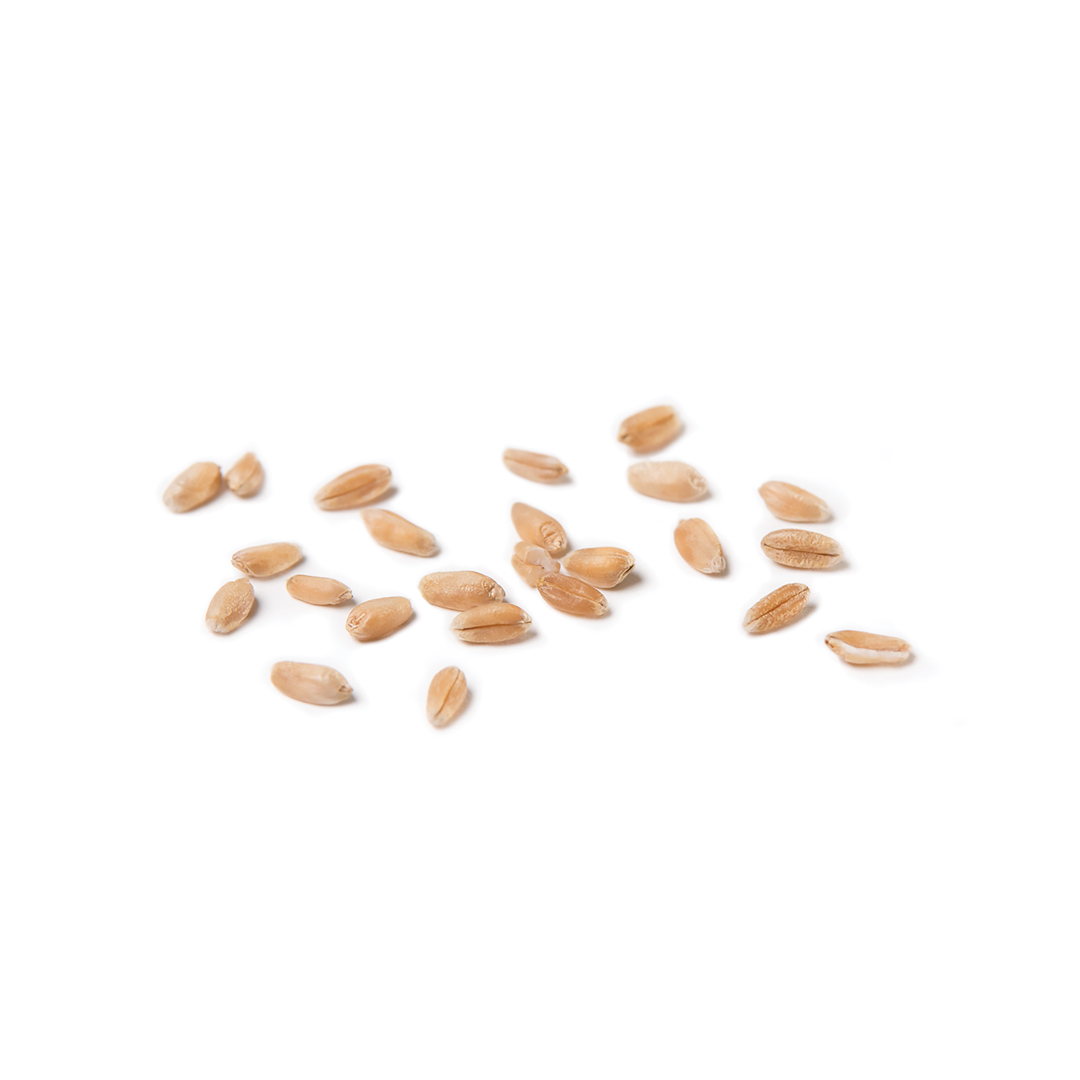CLASS CONSIDERATIONS
BY MELANIE EPP • IMAGES COURTESY OF ALBERTA WHEAT COMMISSION AND CEREALS CANADA
The Canadian Prairie Spring Red (CPSR) class accounted for just six per cent of spring wheat produced in Canada in 2019, yet key export markets primarily in Latin America and Sri Lanka continue to seek out the medium protein wheat. And while overall acreage has dropped, demand has risen, creating opportunities, in particular, for farmers who struggle to achieve the high protein levels required to make grade in Canadian Western Red Spring (CWRS) varieties. Export markets prefer CPSR because it is affordable, high-quality wheat with good protein strength and extensibility. Farmers like it because it yields well and is especially reliable in making grade.
Latin American countries such as Colombia, Ecuador and Peru represent the main export destinations for Canadian CPSR wheat. Due to its relative geographic proximity and the performance of CPSR and Canadian Prairie spring blends, Canada is wellpositioned to deliver value into these Latin American markets, said Daniel Ramage, Cereals Canada director of market development. Further afield in South Asia, Sri Lanka has also been an important market.

Marketing by specification, he said, is increasingly common for CPSR and other wheat outside of the major CWRS and durum classes. This is because it provides flexibility by consistently meeting customer needs while adapting to variability in the supply of smaller wheat classes. Today, most CPSR is sold by specification in blends known as CPS+, a blended end product that includes CWRS and CPSR. In the 2018/19 crop year, wheat sold by specification, including but not limited to CPS+, accounted for roughly 13 per cent of Canadian nondurum exports to the world, added Ramage.
To further develop the market, Cereals Canada and the Canadian International Grains Institute (Cigi) recently delivered a four-day targeted technical baking program focused on promoting CPSR and CPS+ to Colombian millers and bakers. Yulia Borsuk, manager of end products at Cigi and resident baking expert, conducted the workshop. “It was very well received,” she said.
Ramage suggested this approach has also been productive. “Continuing and expanding this training program will play an important role in strengthening customer relationships and establishing the understanding needed to build new opportunities for CPSR and medium protein blends in key export markets,” said Ramage.
Currently, though, export demand exceeds supply. “If we had more production, we could sell more to the existing markets we already have,” said Rhyl Doyle, Paterson Grain director of export trading. “I mean, generally, we run out of CPSR.”
Paterson’s export customers really like Canadian Prairie spring, he said. In Latin America, for instance, they use it as a substitute for hard red winter wheat and blend it with CWRS as a cost cutter. And some baked goods require lower protein flour.
“When you’re selling for the next crop, you don’t necessarily know what the protein is going to be,” said Doyle. “In a year like this where it’s very wet, you can have lower protein. It’s risky to sell and guarantee 11.5 [per cent protein] without the ability to blend in some CWRS to bolster the protein if necessary.”
Typically, there’s very little carryover of CPSR wheat from one year to another, so there’s no insurance to fall back on, either. Instead, they sell CPS+ and work with the customer to decide how much CWRS or Canadian Northern Hard Red (CNHR) can be blended in to bolster protein. Paterson’s export customers are now quite comfortable with this blended product, said Doyle.
DEMAND FOR CPS+ GROWS
The main markets for CPSR wheat are the Latin American countries of Chile, Colombia, Ecuador, Mexico and Peru. Indonesia and Sri Lanka have also been important markets. While at first glance it may appear that export volumes of CPSR are down, they aren’t. Over the past decade, CPSR production has increased. In 2010, CPSR production was 1.1 million tonnes.
That number rose to 1.5 million tonnes in 2019. In terms of market demand, Ramage believes there is strong potential for diversification and growth in CPSR and CPS+. This, he said, could be accomplished through new approaches to market development that bring together key members of the value chain. In fact, market development projects are underway.
Borsuk has travelled to all of Canada’s Latin American grain export market nations and witnessed first-hand the strong interest and appetite for CPSR and CPS+. “There is huge demand for this class,” she said. “They would keep buying more if larger volumes were available for export.”
End users are very happy with CPSR and CPS+ blended wheat. The medium protein class is used in many applications, including baking, pasta and even noodles. Customers like its absorbency. It has good protein strength, which is important for baking quality. It’s tolerant to processing and long fermentation, has good strength and extensibility, which is very favourable for shaping. In a blend with CWRS, CPSR works well for high-volume pan bread and hard breads such as French baguettes, as well as flat breads, crackers and croissants.
In Colombia and Peru, customers use CPSR to make pasta, a more economical option to durum wheat. In Sri Lanka, it is used for premium quality noodles. The starch component makes the noodles bright in appearance and ensures elasticity.

PRICE AND AGRONOMICS KEY TO IMPLEMENTATION
Fairview farmer and Alberta Wheat Commission region five director David Bartlett decided to try 300 acres of CPSR in 2014. At the time, he was looking for alternative rotational crops and a financial return, but he was unable to get better yields than he did on CWRS. It was a dry year, so the crop was short, he said.
“And I was concerned if I stayed with it long-term, I’d either have to choose between hard red spring and CPSR,” said Bartlett, who was concerned about future cross-contaminating by volunteers. “I had to commit to either one or the other, and given the yields I got and the price at the time, I wasn’t prepared to do that.”
Today, though, Bartlett is considering giving CPSR another go, as he’s having difficulty making protein in his CWRS crop and his falling numbers have been low. “If that trend continues, we might as well be growing Canadian Prairie Spring and selling into a medium protein market if we can’t sell into a premium protein market,” said Bartlett.
To attract more farmers, there would need to be significantly higher yields in CPS varieties compared to CWRS varieties, said University of Alberta agronomic researcher Sheri Strydhorst. Farmers also want good standability and better pricing.
Price information from July 21, 2020, indicated that the price of CPSR in central Alberta was $5.85/bu while the price of CWRS in the same region was $6.67/bu. Given the price of CPSR is approximately 14 per cent lower than that of CWRS, farmers would need a 14 per cent CPSR yield increase to achieve a return comparable to CWRS, said Strydhorst.
“Yes, it is true that the protein requirements for Canadian Prairie Spring are 10.5 per cent or better, while CWRS is 13 per cent or better, so there is more risk in achieving a No. 1 or No. 2 grade for CWRS,” she said. “But given the yield difference required to make the two pay the same, many growers are willing to risk it with CWRS cultivars.”
Strydhorst did note that this price spread was based on a snapshot in time. But, she said, it is very typical for CWRS prices to be significantly higher than CPSR prices. “I think the price spread is the big reason why CPSR acres in Alberta have fallen off over recent years,” she added.
But for farmers like Nolan Robertson, it just doesn’t make sense to keep trying to make grade with CWRS. He farms 7,600 acres near Fairview. His father regularly grew CPSR back in the 1990s when there was a significant yield advantage.
Somewhere in the 2000s they decided to switch back to CWRS. This year, though, they decided to try CPSR again, and chose AAC Penhold and AAC Goodwin. Robertson said they mainly switched because he was having a hard time making protein on CWRS. Working closely with an agronomist they tried everything to boost protein, but concluded they just can’t make CWRS work on their farm.
In the past, CPSR’s yield advantage over CWRS was enough to make up for the lower price, said Robertson. Now, though, the CWRS varieties have caught up in terms of yield. Challenging harvests have also pushed Robertson to return to CPSR. While he was mostly making No. 3 in CWRS wheat due to protein levels, his nearby neighbours made No. 2 in CPSR. Even in challenging years, they weren’t being discounted.
“We thought if there’s a chance we continue to have these hard harvests, which we seem to have quite regularly up here in the Peace Country, that trying to achieve that No. 2 CPS will net us more than a No. 3 or feed Hard Red Spring,” he said. “So, that’s another reason why we decided to switch back.”
Agronomically speaking, Robertson likes that CPSR varieties are shorter, with better standability than CWRS varieties and are less prone to lodging. As well, his highest yielding wheat has been a CPSR variety and the class has given him fewer preharvest sprouting problems.
CPSR must be seeded a little heavier to ensure plant populations are high enough, he said. Seed should be treated, as it tends to be more susceptible to disease, particularly at the seedling stage, than the Hard Red Spring varieties, he added. To ensure good emergence, Robertson seeds CPSR a quarter-inch shallower than hard red.
In the Peace Region, Viterra, Cargill and Richardson all take CPSR wheat. But while there are multiple delivery times for CWRS wheat, there are only a few short delivery windows for CPSR. The advantage of this is that you get your tonnage gone, said Robertson. But the disadvantage is that you need to be ready to haul when you get that call.







Comments